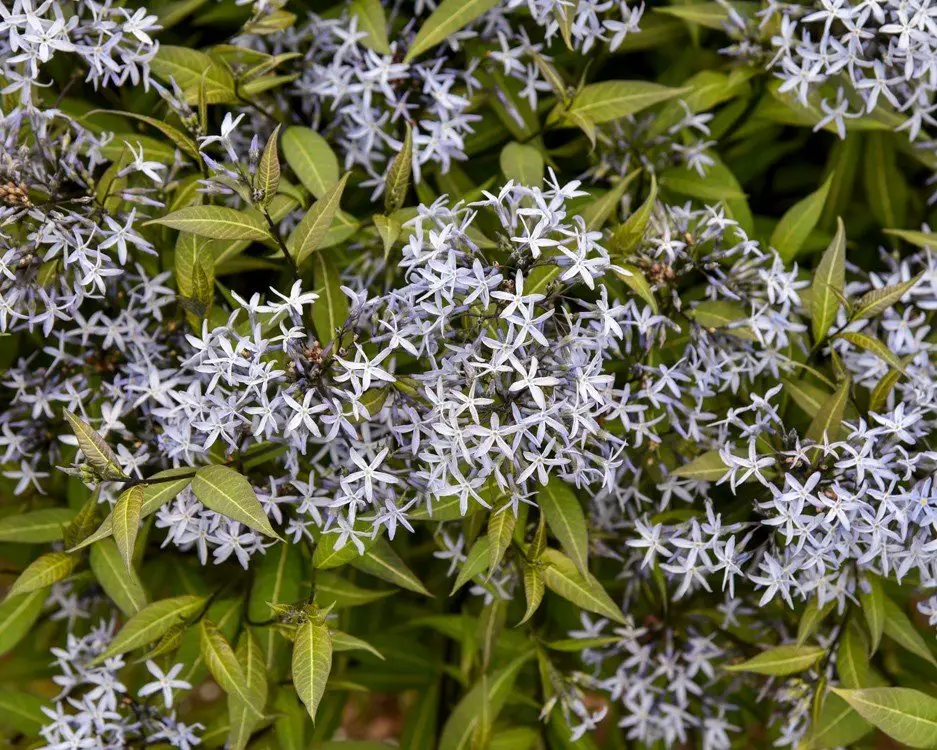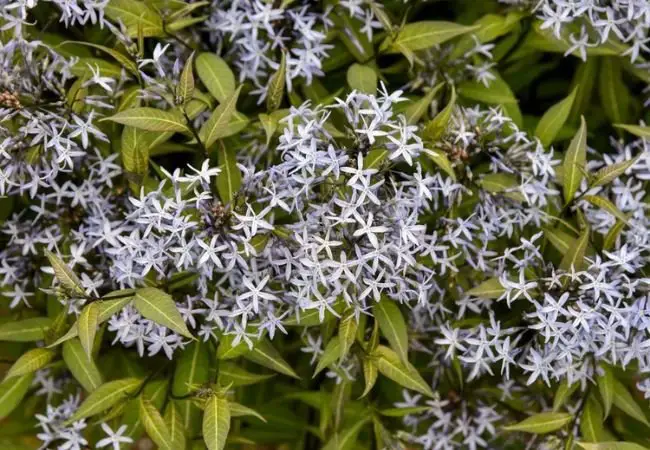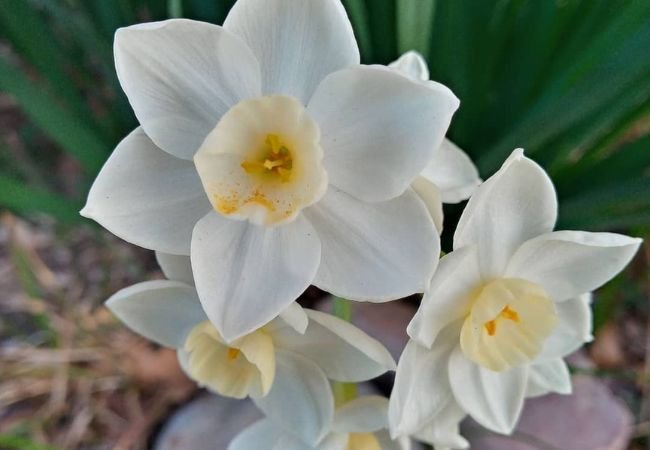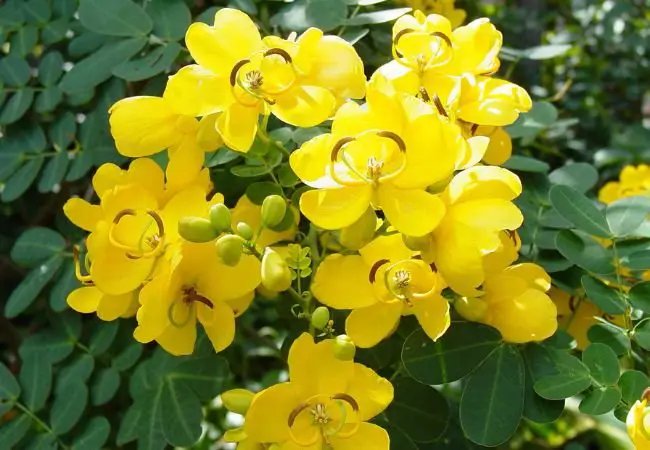Discover the beauty of Amsonia Blue Star. Learn about planting, care and the unique features of this low-maintenance perennial that brings both spring flowers and fall color to your garden.
Amsonia Blue Star also known as blue star flower or Hubricht’s bluestar (Amsonia hubrichtii), is a versatile and attractive perennial that deserves a spot in many gardens. This North American native plant offers delicate blue flowers in spring and golden foliage in fall, making it a year-round interest in the landscape.
Here’s an easy-to-read chart for Amsonia (Blue Star):
| Category | Information |
|---|---|
| Botanical Name | Amsonia tabernaemontana |
| Common Name | Blue Star |
| Plant Type | Perennial |
| Hardiness Zone | USDA Zones 3–9 |
| Sun Exposure | Full Sun to Partial Shade |
| Soil Type | Well-drained, moist soil |
| Watering | Moderate |
| Growth Habit | Upright, clumping |
| Height/Spread | 2–3 ft tall / 2–3 ft wide |
| Special Features | Attractive foliage, deer-resistant, long bloom time, fall color |
About Amsonia Blue Star

Amsonia Blue Star is known for its:
- Pale blue, star-shaped flowers in spring
- Feathery, willow-like foliage that turns golden in fall
- Height: 2-3 feet tall
- Spread: 2-3 feet wide
- USDA Hardiness Zones: 5-9
Learn more about Amsonia varieties
Planting Amsonia Blue Star
When to Plant
- Spring or early fall is ideal for planting
Where to Plant
- Full sun to partial shade
- Well-draining soil
- Tolerates a range of soil types
How to Plant
- Dig a hole twice the width of the root ball
- Plant at the same depth as it was in the container
- Space plants 2-3 feet apart
- Water thoroughly after planting
Detailed planting guide for perennials
Caring for Amsonia Blue Star
Watering
- Water regularly during the first growing season
- Once established, it’s drought-tolerant
Fertilizing
- Apply a balanced, slow-release fertilizer in spring
- Avoid over-fertilizing, which can cause floppy growth
Pruning
- Cut back by one-third after flowering to maintain shape
- Prune to the ground in late winter or early spring
Winter Care
- Leave foliage standing for winter interest
- Apply a layer of mulch in colder regions
Propagating Amsonia Blue Star
You can propagate Amsonia Blue Star through:
- Division: Every 3-4 years in spring or fall
- Seeds: Collected in fall and sown in spring
- Stem cuttings: Taken in early summer
Guide to propagating perennials
Landscaping with Amsonia Blue Star
Amsonia Blue Star works well in various garden settings:
- Perennial borders
- Cottage gardens
- Native plant gardens
- Rain gardens
- As a massing plant
Companion plants that pair well with Amsonia include:
- Coreopsis
- Echinacea (Coneflower)
- Ornamental grasses
- Phlox
Seasonal Interest of Amsonia Blue Star
- Spring: Pale blue, star-shaped flowers
- Summer: Lush green, feathery foliage
- Fall: Spectacular golden yellow foliage
- Winter: Dried stems provide texture in the garden
Benefits of Amsonia Blue Star
- Low maintenance once established
- Deer and rabbit resistant
- Attracts pollinators like butterflies
- Drought-tolerant after establishment
Common Problems and Solutions
While generally pest-free, Amsonia may occasionally face:
- Leaf spots: Remove affected leaves and improve air circulation
- Root rot: Ensure proper drainage and avoid overwatering
- Floppy stems: Provide support or prune to encourage bushier growth
Troubleshooting perennial problems
Amsonia Blue Star is a delightful perennial that offers multi-season interest with its spring flowers, summer foliage, and fall color. Its low-maintenance nature and resistance to pests and deer make it an excellent choice for many gardens. Whether you’re looking to add native plants to your landscape or simply want a beautiful, easy-care perennial, Amsonia Blue Star is worth considering.
By following these planting and care guidelines, you can enjoy the beauty of Amsonia Blue Star in your garden for years to come. Remember, as with any plant, observing its growth and adjusting care as needed will help ensure its success in your specific garden conditions.
Explore more native plants for your garden






